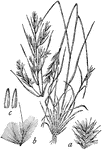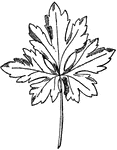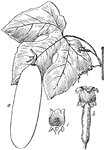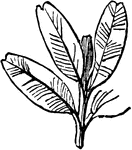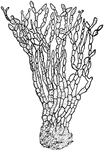
Brown Rot
Sometimes known as Brown Rot, Monilinia fructigena is a plant pathogen. "Sclerotinia fructigena. a,…

Ionic Cornice from the Temple of Minerva Polias at Priene
The entablature resting on the columns has three parts: a plain architrave divided into two, or more…
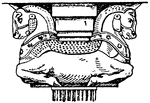
Ancient Persian Capital
The Ancient Persian capital is a design of the fore-parts of bulls. It is an Old Persian style that…
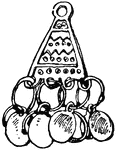
Old Frankish Earring
The Old Frankish earring is a pendant that is free-ending with different moveable parts.

Cyperus
An illustration of the partial inflorescence of a cyperus plant, spikelet of the same (left), and the…
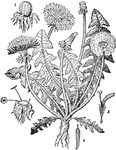
Dandelion
Taraxacum is a large genus of flowering plants in the family Asteraceae. They are native to Europe,…
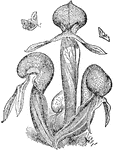
Darlingtonia Californica
Darlingtonia californica also called the California Pitcher plant, Cobra Lily, or Cobra Plant, is a…
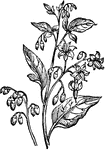
Bittersweet
The Bittersweet (Solanum dulcamara) is a perennial vine in the Solanaceae family of nightshades.

Dorian
The dorian (Durio zibethinus) is the fruit of the dorian tree in the Bombacaceae family. The fruit is…
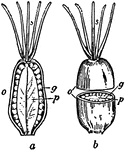
Cashew Tree
An illustration of various parts of the cashew tree. "1, Branch, bearing flowers and fruit. The fruit…

Plant House
A lean-to plant house which is associated with the growth of ornamental plant and flowers.
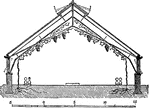
Span-Roofed Vinery
A span-roofed vinery is a type of plant house which affords roof space for the development of vines.
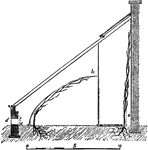
Peach House
The peach house is a structure in which the ripening of the fruit is accelerated by the judicious employment…

Forcing House
Whenever continuous supplies of cucumbers, melons, and tomatoes are required, it is most convenient…

Root-Grafting of Dahlia
Grafting is a method of asexual plant propagation widely used in agriculture and horticulture where…

Root-Grafting of Woody Plant
Grafting is a method of asexual plant propagation widely used in agriculture and horticulture where…

Propagation by Cuttings
Plant propagation is the process of artificially or naturally distributing plants. Pictured here is…
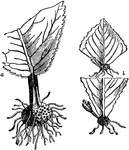
Leaf Cuttings
Plant propagation is the process of artificially or naturally distributing plants. Pictured here is…
D Valve
"A valve for opening and closing the induction and eduction passages of a steam-engine cylinder: so…

D Valve
"A valve for opening and closing the induction and eduction passages of a steam-engine cylinder: so…
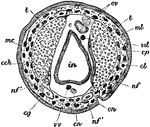
Sectional View of Acanthobdella
An illustration of a sectional view of a Acanthobdella, a member of the annelid family. "c, Coelom;…
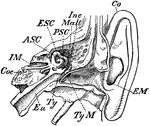
Inner Ear
"Transverse Section through Side Walls of Skull, showing the Inner Parts of the Ear. Co, concha or external…
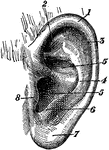
External Ear
"External Ear, or Pinna. 1, helix; 2, fossa of antihelix, or fossa triangularis; 3, fossa of helix,…
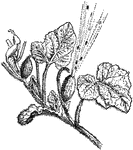
Squirting Cucumber
The Squirting or Exploding Cucumber (Ecballium elaterium) is a cucumber plant named for squirting a…

Coast Barrel Cactus
The Coast Barrel Cactus (Ferocactus viridescens) is a cactus seen throughout southern California.
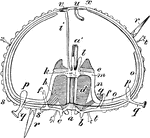
Sea Urchin Section
"Diagram of an Echinus (stripped of its spines). a, mouth; a', gullet; b, teeth; c, lips; d, alveoli;…
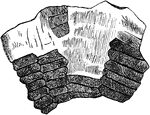
Urchin Fossil
A fossil of Echinothuria floris, a species of sea urchin "having the plates of the shell overlapping…

Southern Globe Thistle
The Southern Globe Thistle (Echinops ruthenicus) is a species of thistles in the Asteraceae or daisy…
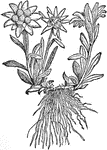
Edelweiss
Edelweiss (Leontopodium alpinum) is a European mountain flower of the Asteraceae or daisy family.
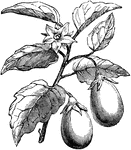
Eggplant
The Eggplant (Solanum melongena) is a flowering plant in the Solanaceae family of nightshades. Its fruit…
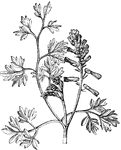
Fumitory
Fumaria is a genus of about fifty annual herbaceous flowering plants in the family Fumariaceae, native…

Fumitory (Side-view)
An illustration of the side-view of the fumitory flower Fumaria is a genus of about fifty annual herbaceous…

Fumitory Flower (Longitudinal Section)
An illustration of a longitudinal section of the fumitory flower. Fumaria is a genus of about fifty…
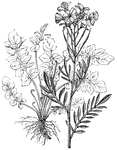
Cardamine
An illustration of: A, Inflorescence and cauline leaves; B, Radical leaves and root. Cardamine (Car-dá-mi-ne,…
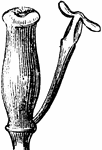
Pistil and Stamen of Burberis
An illustration of the a stamen and pistil of the berberis plant. Berberis (Bér-be-ris, barberry,…
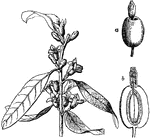
Oleaster
"Flowering Branch of Oleaster (Elaeagnus angustifolia). a, fruit; b, section of same." -Whitney, 1911

Long-Horned Beetle
"Elaphidion parallelum ... a, larva; b, twig split open, showing inclosed pupa; k, severed end of twig;…
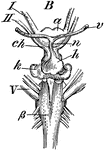
Skate Brain
"Brain of Skate (Raia batis), an elasmobranchiate fish. B, from below, in part enlarged: ch, optic chiasm;…
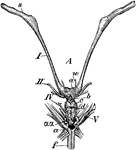
Skate Brain
"Brain of Skate (Raia batis), an elasmobranchiate fish. A, from above; s, olfactory bulbs; a, cerebral…
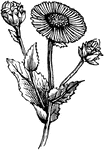
elecampane
The Elecampane (Inula helenium) is a flowering plant in the Asteraceae family of daisies.
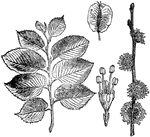
English Elm
Now known as Ulmus procera, the image shows a "Flowering Branch and Foliage of English Elm (Ulmus campestris),…

Carrot Flower
An illustration of the inflorescence of the carrot plant. An inflorescence is a group or cluster of…

Fructification of Carrot Flower
An illustration of fructification of the carrot flower. Fructification is a term used in the plant morphology…
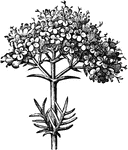
Valerian Inflorescence
Valerian is a hardy perennial flowering plant, with heads of sweetly scented pink or white flowers.…

Valerian Flower
Valerian is a hardy perennial flowering plant, with heads of sweetly scented pink or white flowers.…

Valerian Flower (Longitudinal Section)
An illustration of a longitudinal sectional view of the valerian flower. Valerian is a hardy perennial…
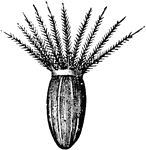
Valerian Seed with Pappus
An illustration of the valerian seed with attached pappus. In a composite flower, Pappus is the part…
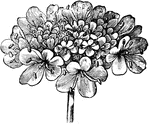
Inflorescence of Field Scabious
An illustration of the inflorescence of the field scabious. Knautia arvensis, commonly known as Field…
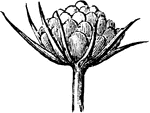
Young Inflorescence of Field Scabious
An illustration of the young inflorescence of the field scabious. Knautia arvensis, commonly known as…

Ray-floret of Field Scabious
An illustration of a ray-floret of the field scabious. Knautia arvensis, commonly known as Field Scabious,…

Ray-floret of Field Scabious
An illustration of a ray-floret of the field scabious. Knautia arvensis, commonly known as Field Scabious,…

Seed of Field Scabious
An illustration of the seed of the field scabious. Knautia arvensis, commonly known as Field Scabious,…
